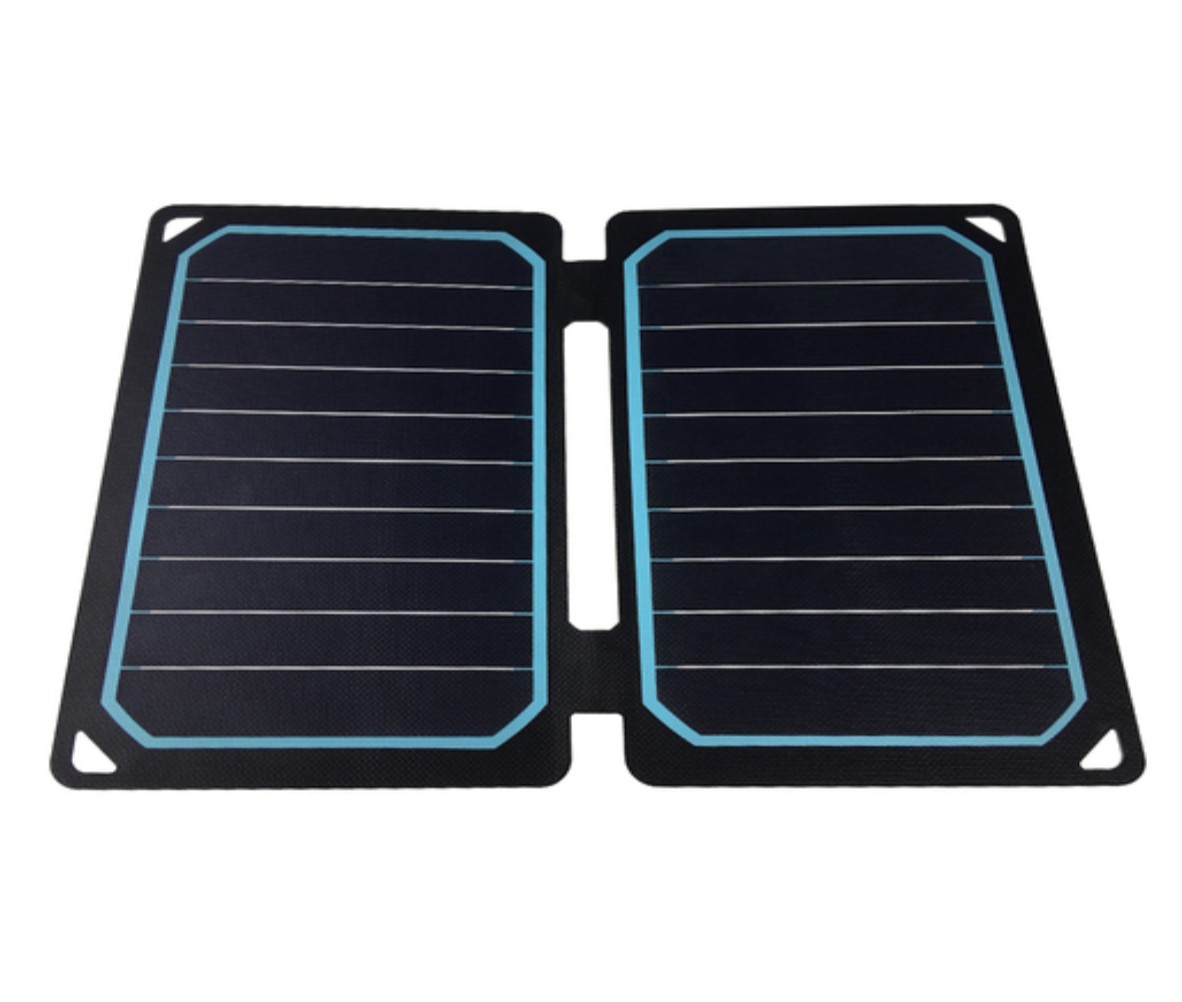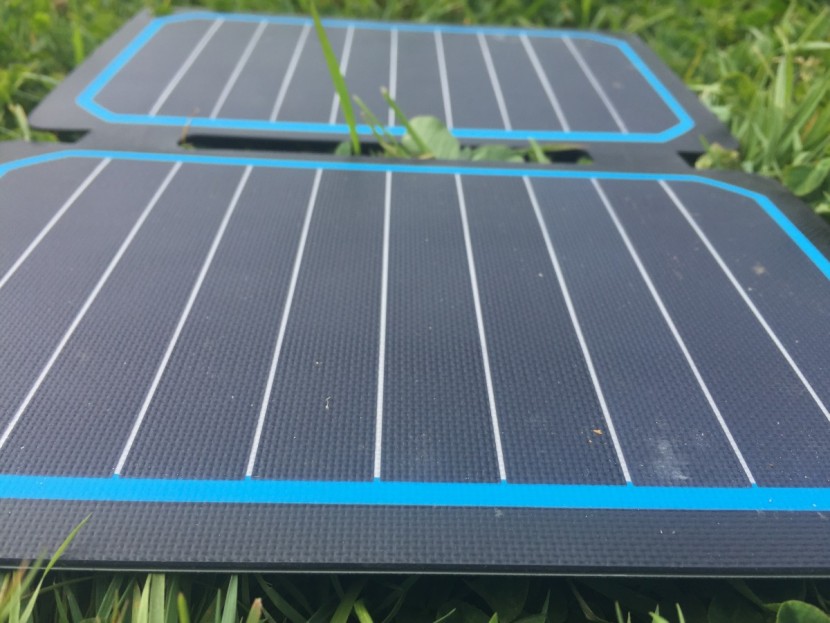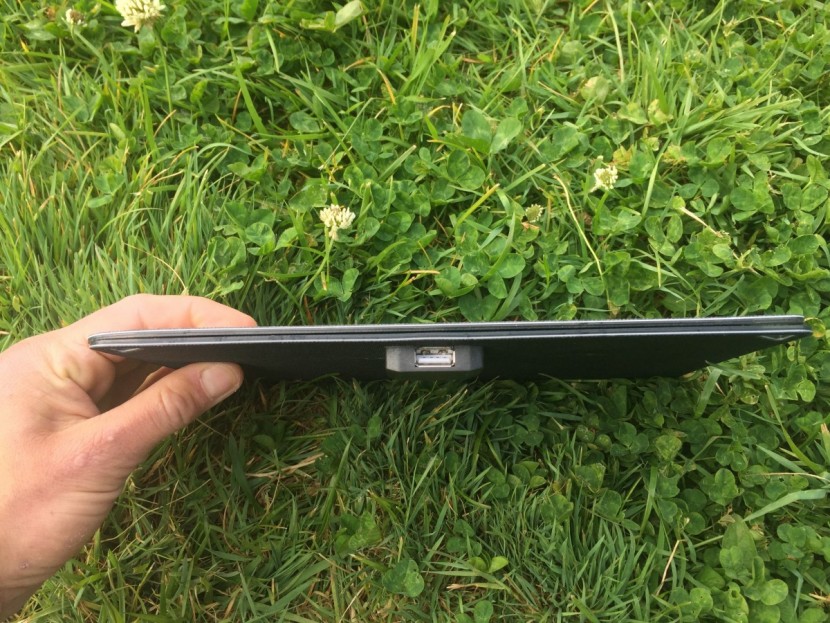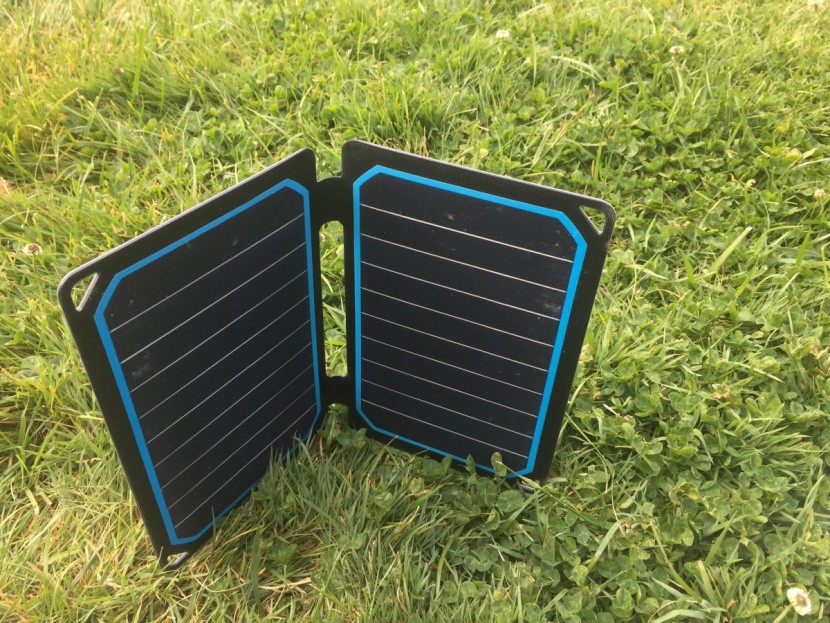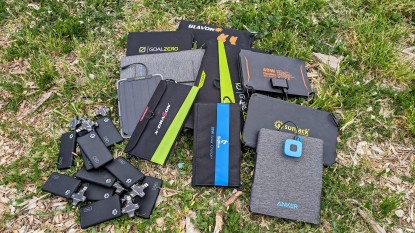Renogy E.Flex10 Review
Our Verdict
Our Analysis and Test Results
The Renogy 10W is a simple panel that is small in size and durable in design. It only has one port, no pockets or canvas exterior, but this simplicity makes it lightweight and durable. We found that the Renogy charged our devices quickly and efficiently, especially for being relatively small. With high scores in durability, weight, and portability, the Renogy 10W was one of our new favorites in our updated review this season.
Performance Comparison
Charge Interruption Recovery
Much like the 5W version we tested, the Renogy 10W did not excel regarding charge interruption recovery. Like we mentioned in our review of the Renogy 5W, these compact panels have a difficult time recovering a charge to a device after an interruption in sun exposure. Whereas the Instapark Mercury 10W has the same capacity but a large surface area of solar cells, the Renogy 10W is much smaller (2 panels as opposed to 3). When going from full sun exposure to shaded, the Renogy 10W was unable to resume charging the small battery pack at all. This is a similar to the experience we had with the 5W version of this panel. If this is a major concern for you, a larger capacity panel (like the X-Dragon 40W) will be more efficient overall, especially in partially cloudy conditions.
Charging Speed
This panel charges gadgets quickly. When testing this panel in full sun, we were able to charge our small battery pack from 0% to 23% in a little over an hour and a half. After 30 minutes in the sun, the battery had already charged 10%, which is comparable to the performance of other top-ranking panels of similar size, like the Renogy 5W. If weight and portability are factors in your decision making, but you want a slightly more efficient panel than the 5W, the Renogy 10W is an excellent option.
Multiple Device Charging Speed
The beauty of the Renogy 10W is in its simplicity. The panel has no pockets, no extra cords or adapters, and has only one USB port. We appreciated this aspect of its design, since we found that panels of this size have a hard time generating enough power to charge multiple devices simultaneously anyway. For an option that charges more than one device effectively, check out any of the 20W panels we reviewed (especially our Editors' Choice winner, the Anker 21W), or the X-Dragon 40W which is the largest-capacity panel we have tested.
Durability
The simplicity of the Renogy 10W also makes it one of the more durable panels we tested. The solar cells are coated with a durable, waterproof coating. Rather than having the panels set into a canvas frame, the Renogy is made of entirely one material. The lack of seams or stitches makes the panel more durable since there are fewer opportunities for water or dirt to get inside and damage the cells. One negative to this design is that the USB port is exposed to the elements, rather than in a protected pocket like most of the other panels we tested. The Voltaic also has this design, and we noted that this is a potential weak point for both panels.
Weight & Portability
With a measured weight of 12.2oz, the Renogy 10W is comparable to most of the other 10W panels in we reviewed. The RavPower 16W weighs 15 ounces, and is similar in size and capacity. What sets the Renogy apart is its portability. Though the other panels are of similar size, the Renogy has no Velcro or pockets or extra features, which makes it easy to transport.
Best Application
Its durability, size, and simple design make this a great panel for backpacking or traveling. It can be folded up and thrown in a bag without fear of the panel breaking or getting dirty. Its durable construction wipes off easily, and it has no nooks or crannies where dirt collects. The Renogy 5W received our Top Pick award for Lightweight design, and the 10W version is a good option for those looking for a similarly durable, portable panel with a bit more power.
Value
This panel is a reasonable value. The Renogy 10 is sold online for $60, comparable to the Anker PowerPort Lite 15, the Anker PowerPort 21W, and the Instapark Mercury 10W. All of these panels cost around $60, but have various pros and cons. For a very durable, portable panel with a single USB port, the Renogy 10W is a good choice. Though some of the other panels listed above have larger capacities, the Renogy had one of our favorite designs and was suitable for charging small electronics.
Conclusion
Overall, the Renogy 10W is one of our top picks for a mid-capacity panel. It is durable, simple, and reasonably priced. Though the panel only has one USB port, we did not find this to be a problem because it is relatively small anyway. We like the durable construction of this panel and were not afraid to take it into the backcountry and get it dirty! With its ability to charge efficiently and its low cost, we would recommend this to anyone.


